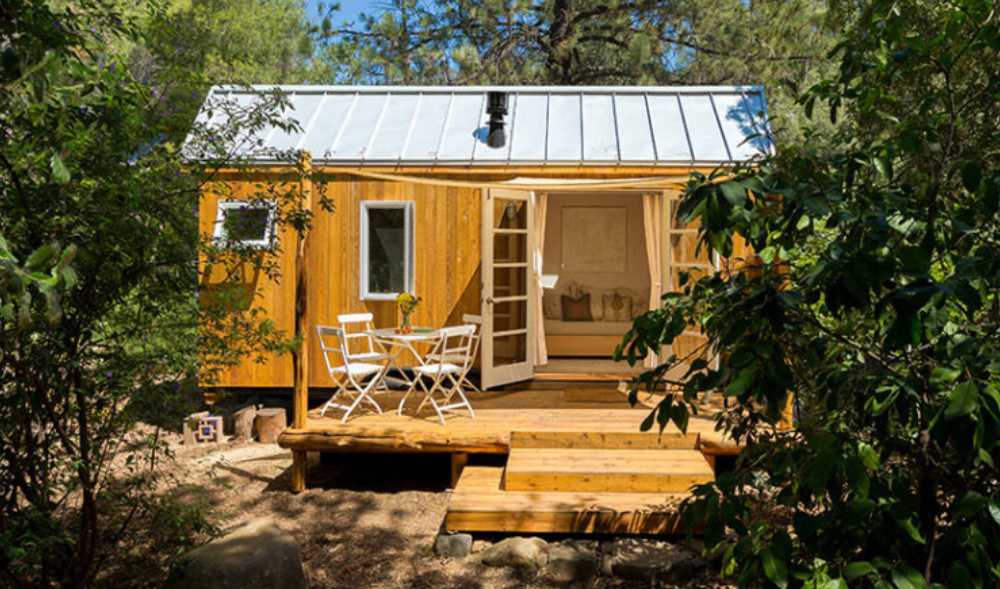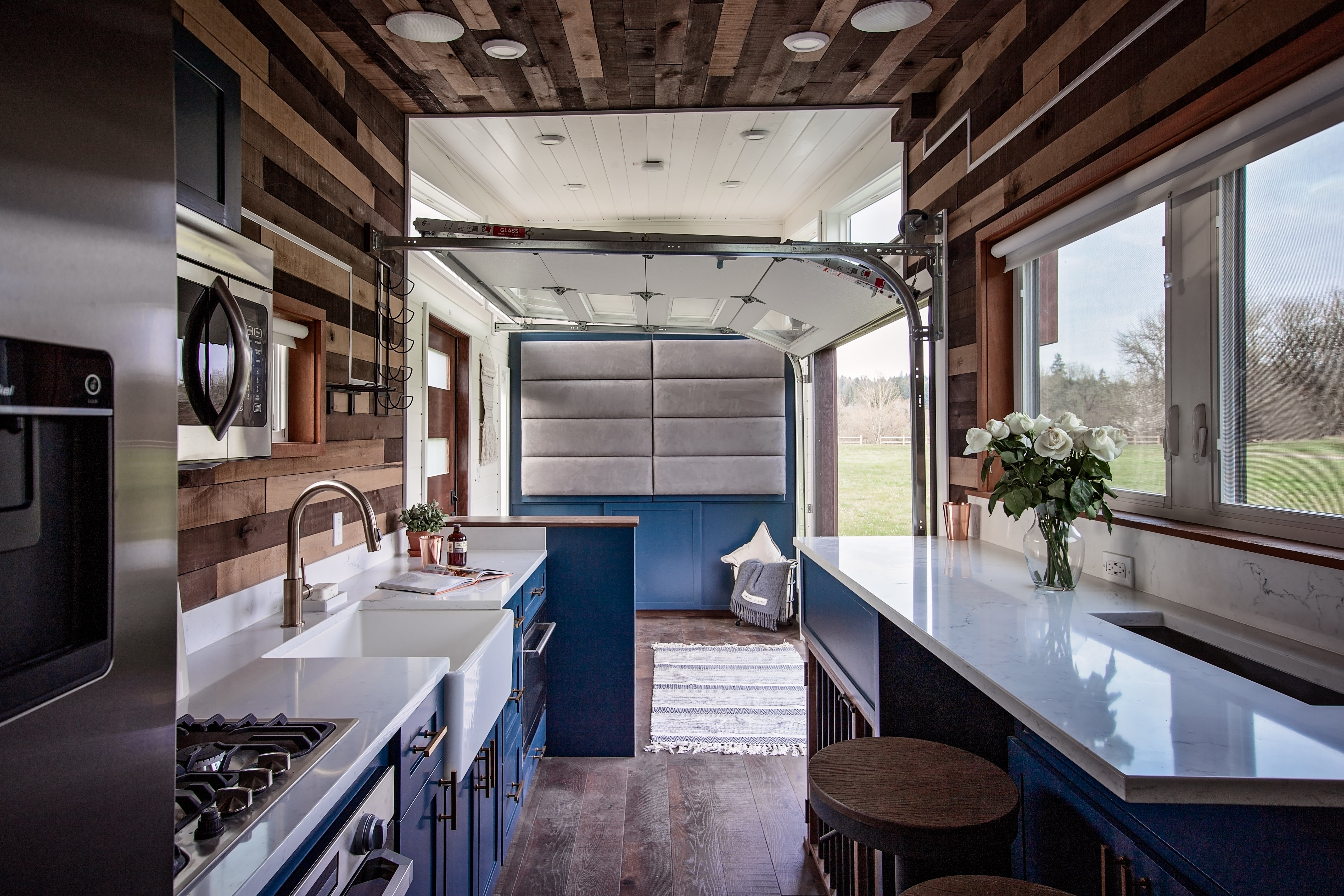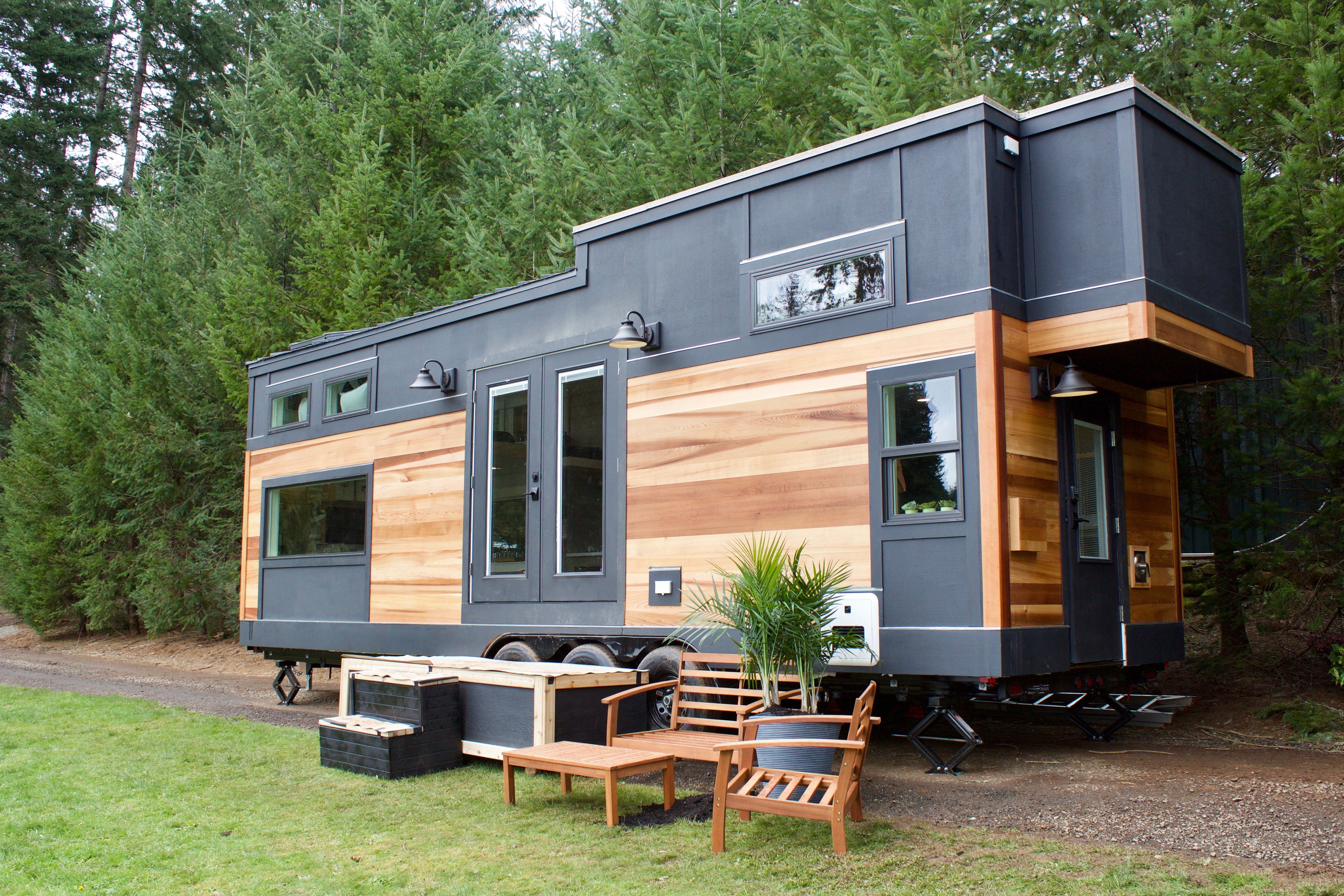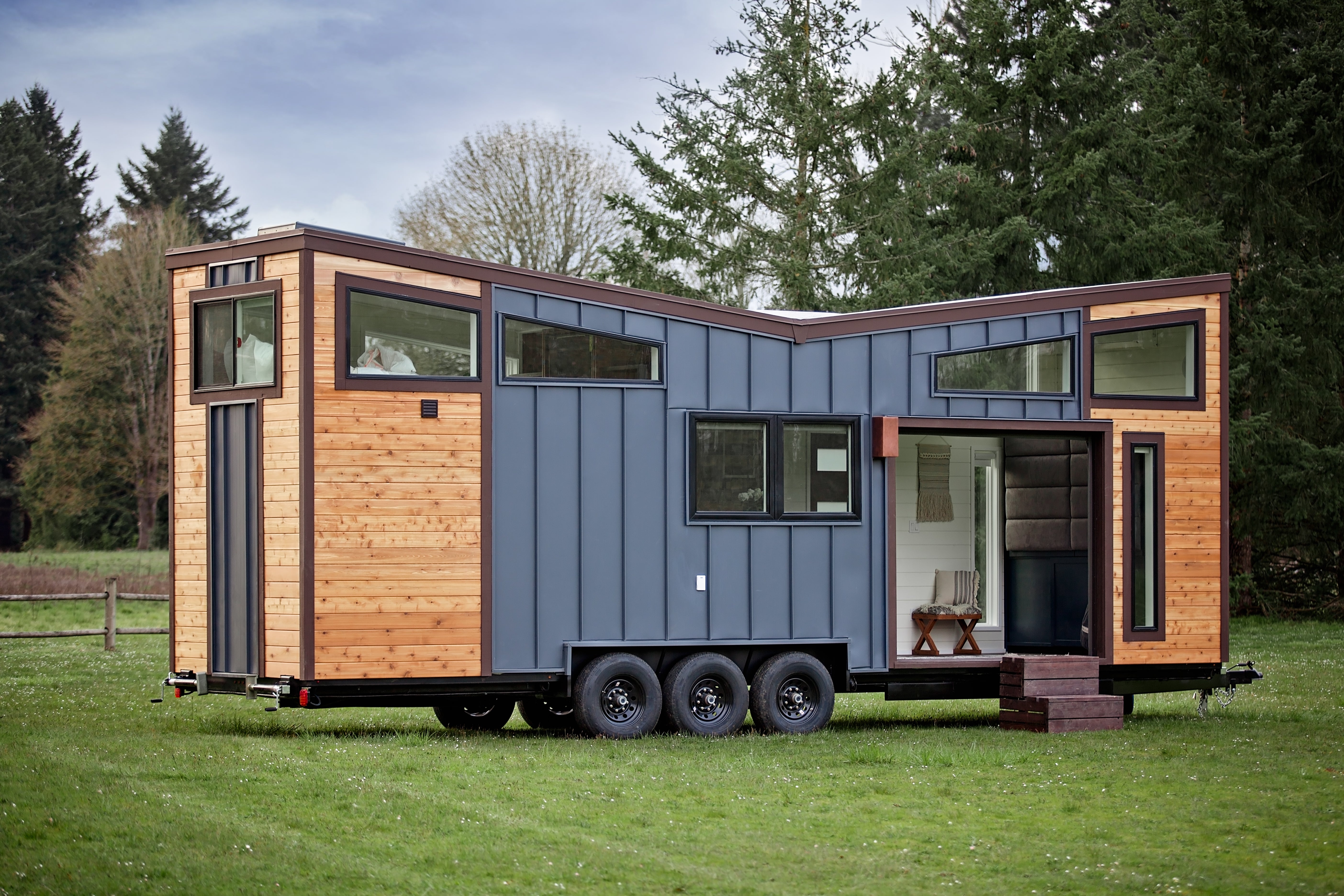To guarantee fresh air in your tiny house, focus on effective ventilation solutions. Utilize natural techniques like placing windows for cross-ventilation and adding skylights for hot air escape. Install energy-efficient exhaust fans in areas like the kitchen and bathroom to remove moisture and odors.
Consider a heat recovery ventilation system to maintain warmth while bringing in fresh air. Prioritize maintaining indoor air quality by choosing low-VOC products. There's more to discover about optimizing your tiny home's air quality.
Key Takeaways
-
Utilize strategically placed windows and vents for cross-ventilation to enhance airflow.
-
Install skylights or roof vents to allow warm air to escape naturally.
-
Use energy-efficient exhaust fans in kitchens and bathrooms to remove moisture and odors.
-
Consider compact heat recovery ventilation systems for efficient air exchange and energy savings.
-
Regularly maintain HVAC systems and use air purifiers to improve indoor air quality.

Understanding the Importance of Ventilation in Tiny Homes
When it comes to tiny homes, understanding the importance of ventilation can't be overstated. You might think of ventilation as just a way to keep fresh air circulating, but it's much more than that. Proper ventilation prevents moisture buildup, which can lead to mold and health issues. In a small space, every breath you take affects air quality considerably.
Without adequate airflow, odors linger and indoor air pollutants accumulate, affecting your health and comfort. A well-ventilated space guarantees that you maintain a healthy living environment, enhancing your tiny home's overall livability. Additionally, good ventilation helps regulate temperature, minimizing excessive heat or cold. By prioritizing efficient ventilation, you're guaranteeing your tiny house remains a comfortable, safe haven.
Natural Ventilation Techniques for Tiny Houses
A great way to guarantee your tiny home stays well-ventilated is by using natural ventilation techniques. Start by strategically placing windows and vents to encourage cross-ventilation. Open windows on opposite sides to let fresh air flow effectively through your space. Consider installing skylights or roof vents to allow warm air to rise and escape, keeping your home cooler. Additionally, use operable windows and doors to control airflow based on weather conditions.
Don’t forget to utilize passive cooling methods like shading your windows with curtains or blinds during the hottest parts of the day. Planting trees or using awnings can also help block excessive sunlight. By adopting these natural ventilation techniques, you can enjoy a fresher, more comfortable living environment in your tiny house.
Utilizing Exhaust Fans for Optimal Airflow
Exhaust fans play an essential role in maintaining ideal airflow in your tiny house. They efficiently remove stale air, odors, and excess moisture, keeping your living space fresh. By installing exhaust fans in strategic locations like the kitchen and bathroom, you can prevent mold growth and improve indoor air quality. Choose energy-efficient models that suit your space's size and specific needs to guarantee peak performance.
Positioning your exhaust fans correctly is vital. Make sure they're located near the ceiling, as hot air rises, and this guarantees effective ventilation. Regular maintenance is also key—clean filters and inspect fan blades to maintain efficiency. With the right exhaust fans, you'll enhance airflow and enjoy a comfortable, healthy environment in your tiny home.
Incorporating Heat Recovery Ventilation Systems
Although tiny houses have limited space, incorporating heat recovery ventilation (HRV) systems can greatly enhance indoor air quality. HRV units efficiently exchange stale indoor air with fresh outdoor air while retaining heat, making them vital for tiny living. By installing an HRV system, you’ll reduce energy costs and maintain a comfortable temperature, even in colder climates. These systems are compact and designed to fit small spaces, guaranteeing they won’t take up unnecessary room.
When choosing an HRV system, consider factors like noise levels and airflow capacity to make sure it meets your needs. Proper installation is key for maximizing its benefits, so follow manufacturer guidelines or consult a professional. With an HRV, you’ll breathe easier, enjoying a healthier, more sustainable tiny home environment.

The Role of Dehumidifiers in Tiny Spaces
With an HRV system ensuring ideal air exchange, it's important to address another key aspect of air quality in tiny homes: humidity control. Dehumidifiers play an essential role in maintaining optimal humidity levels. In such compact spaces, excess moisture can lead to mold, mildew, and health issues. By using a dehumidifier, you can effectively manage moisture, ensuring a healthier living environment.
Choose a compact, energy-efficient dehumidifier suited for tiny spaces. Look for models with adjustable humidity settings and auto-shutoff features to prevent over-drying. Place it in areas prone to moisture, like the bathroom or kitchen. Regularly empty the water reservoir or connect it to a drain for continuous operation. This proactive step keeps your tiny home fresh and comfortable all year round.
Strategic Window Placement for Cross Ventilation
Cross ventilation is an essential strategy for maintaining air quality and comfort in a tiny house. By strategically placing windows, you can promote a continuous flow of fresh air, reducing stuffiness and odors. Position windows on opposite walls to maximize airflow. This setup allows air to enter through one window and exit through another, effectively revitalizing your space.
Consider the direction of prevailing winds in your area to optimize window placement. Higher windows can help expel hot air, while lower ones allow cooler air in. Also, incorporate operable windows you can easily open and close based on weather conditions. By focusing on these strategies, you’ll guarantee your tiny house remains comfortable and well-ventilated year-round, without relying solely on mechanical systems.
Choosing Energy-Efficient Ventilation Options
When choosing energy-efficient ventilation options for your tiny house, prioritize systems that minimize energy consumption while maximizing airflow. Look for Energy Star-rated ventilation fans, which are designed to use less power without sacrificing performance. Consider installing a heat recovery ventilator (HRV) or an energy recovery ventilator (ERV). These systems not only provide fresh air but also maintain temperature balance by transferring heat between incoming and outgoing air.

Solar-powered attic fans can also be an excellent choice, harnessing solar energy to ventilate your space efficiently. Verify your chosen system suits your specific climate and meets your daily ventilation needs. Additionally, programmable timers or smart controls can enhance efficiency by allowing you to manage ventilation based on usage patterns, further reducing energy consumption.
Maintaining Indoor Air Quality in Tiny Houses
Ensuring indoor air quality in your tiny house is essential for a healthy living environment. First, prioritize ventilation by installing windows that open easily. This promotes natural airflow, quickly removing pollutants and moisture. Also, consider adding exhaust fans in the kitchen and bathroom to eliminate excess humidity and odors.
You should regularly check and replace air filters in your HVAC systems to prevent dust and allergens from circulating. Using air purifiers can further enhance air quality by capturing small particles.
Don't forget to minimize indoor pollutants by choosing low-VOC paints and cleaning products. Houseplants like spider plants and peace lilies can naturally purify the air. By implementing these strategies, you'll maintain cleaner, fresher air in your compact living space.
Conclusion
To guarantee your tiny house stays comfortable and healthy, prioritize effective ventilation solutions. Use natural ventilation techniques and exhaust fans to enhance airflow. Incorporate heat recovery systems to maintain temperature while saving energy. Strategically place windows for ideal cross ventilation, and consider dehumidifiers to control moisture levels.
Choose energy-efficient options to reduce costs and environmental impact. By maintaining good indoor air quality, you'll create a fresh, inviting space that maximizes both comfort and sustainability.






Share: